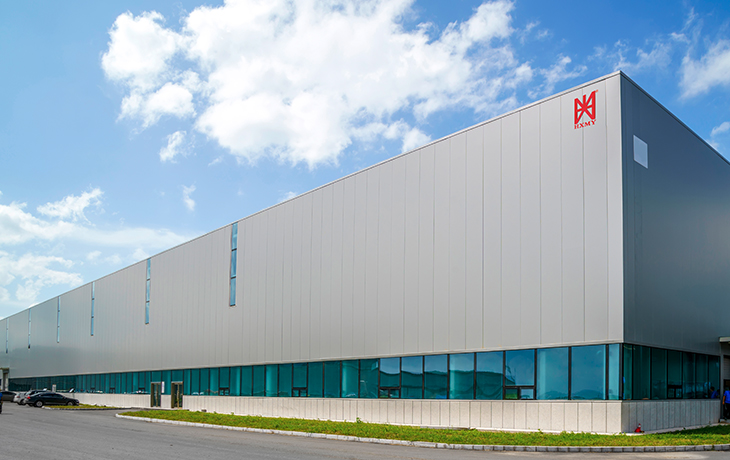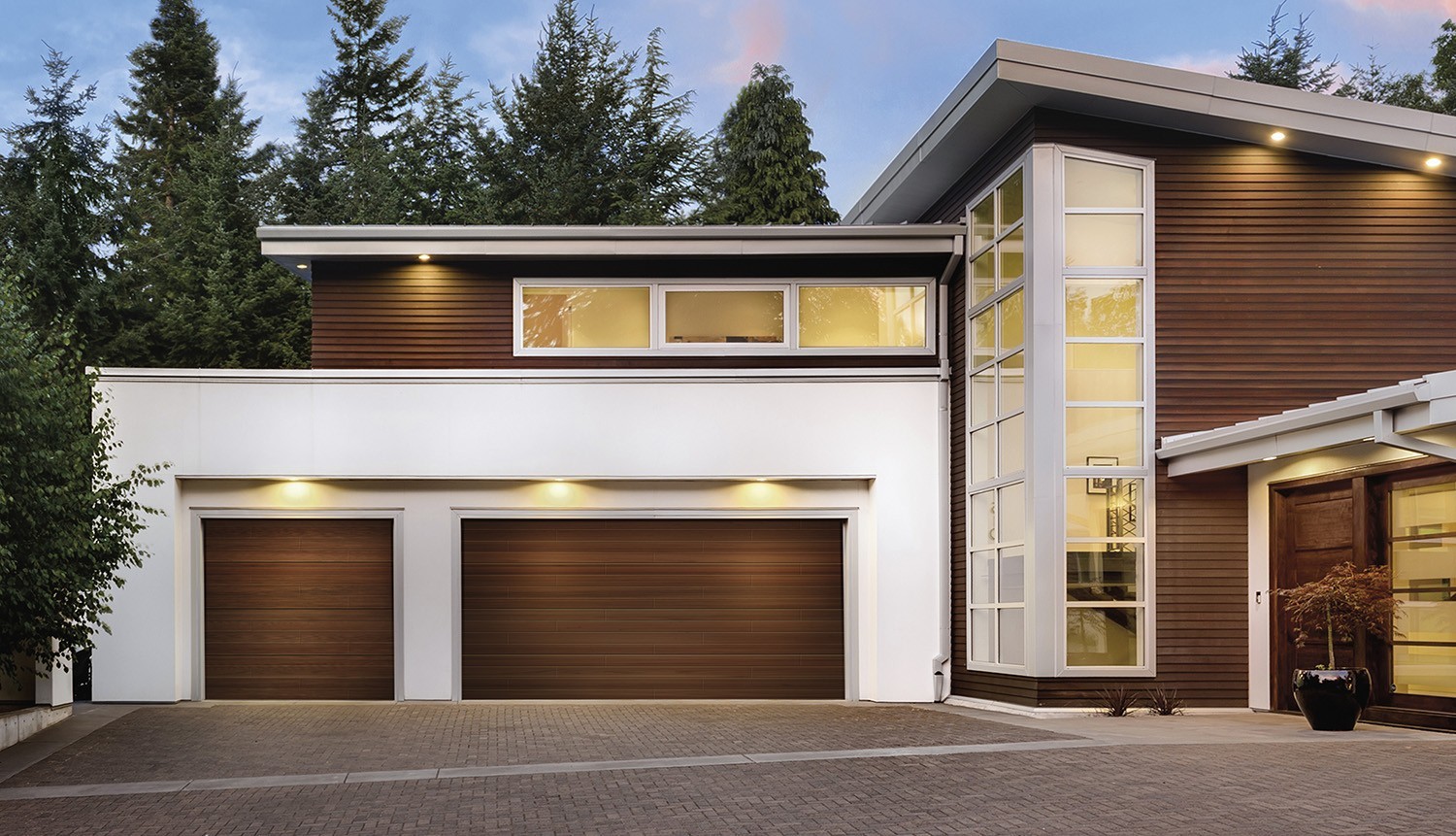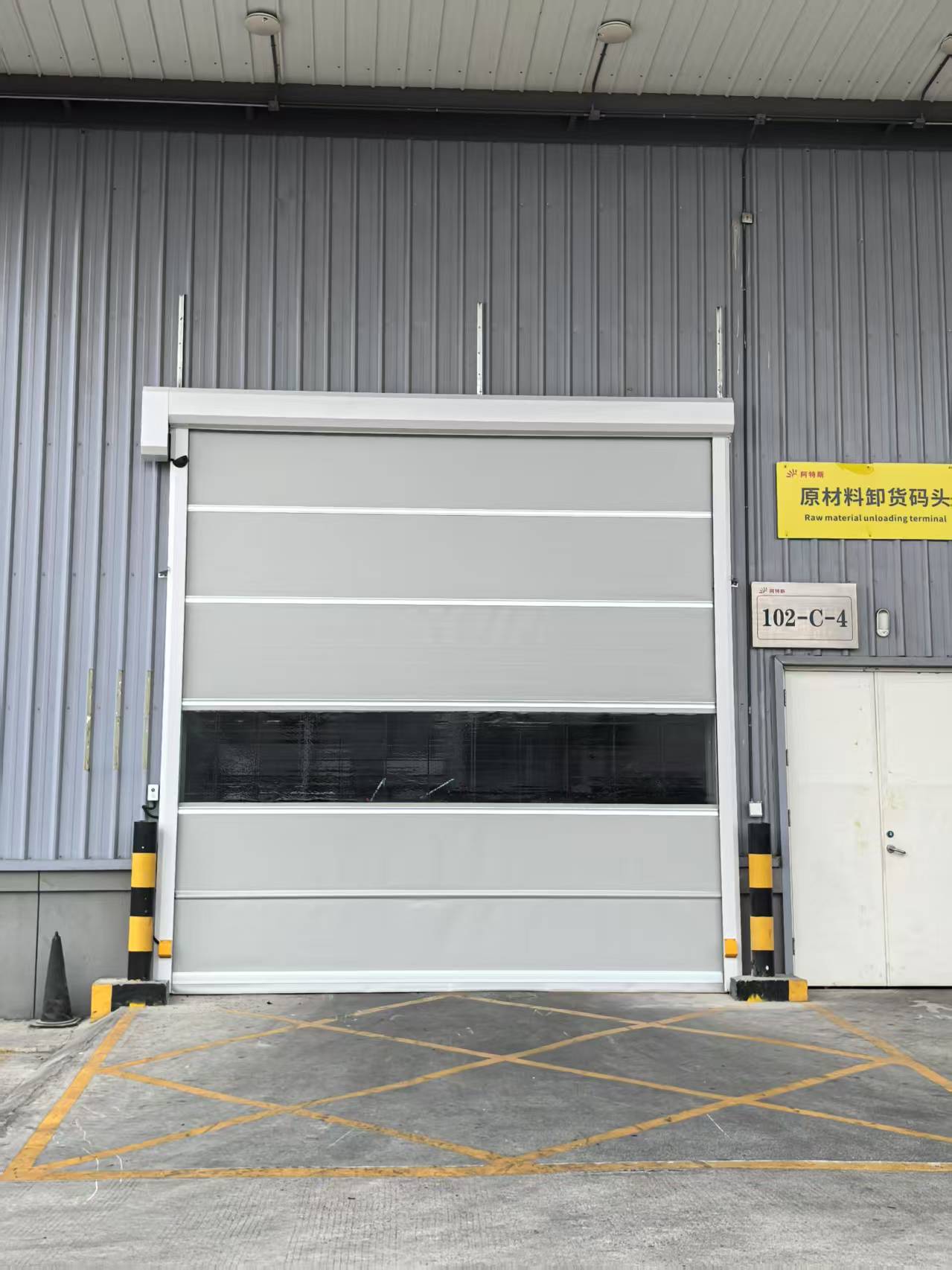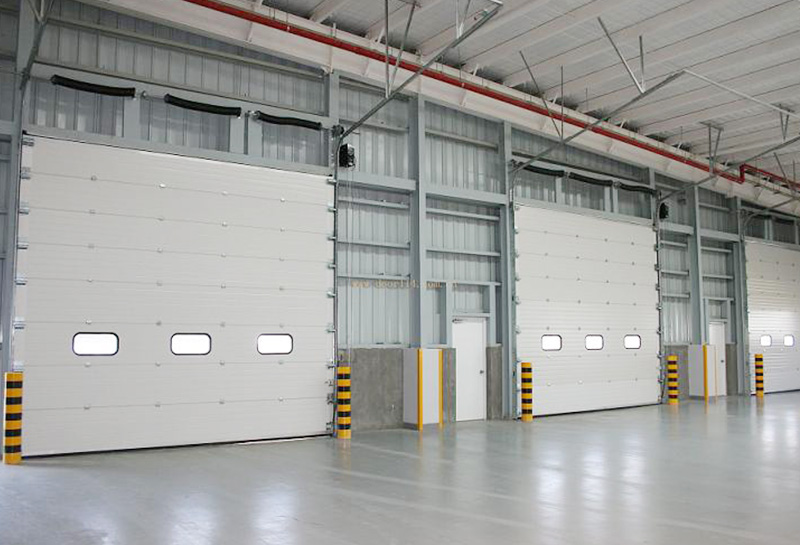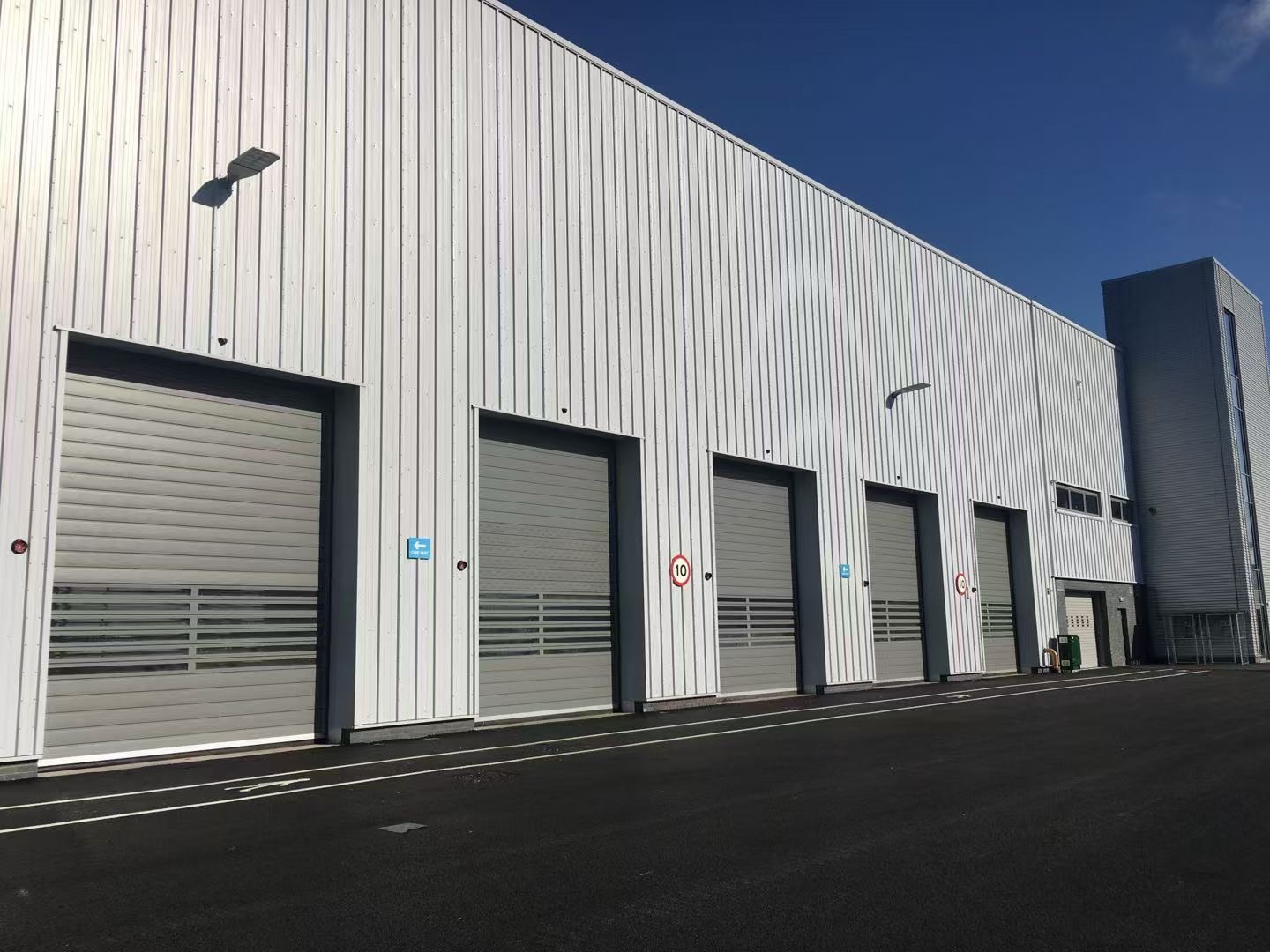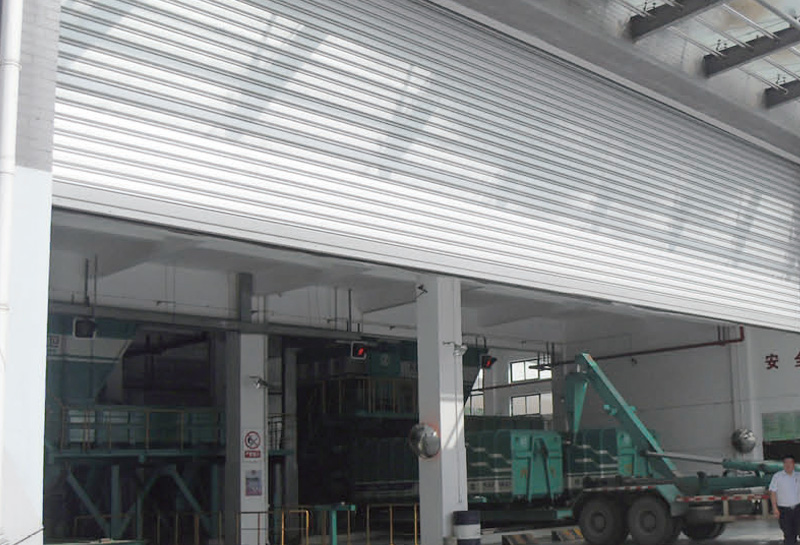Challenges of Traditional Room Dividers
Traditional partitions (e.g., walls, sliding doors) face critical limitations:
1. Rigid Layouts: Permanent structures hinder spatial adaptability for reorganizations or expansions.
2. Inadequate Soundproofing: Gaps in sliding doors allow noise leakage (≤45dB reduction vs. ≥60dB for rapid doors).
3. Access Constraints: Swing/slide clearances obstruct traffic flow, reducing operational efficiency by 30-40%.
Advantages of High-Speed Rolling Doors
1.Optimization of space: The rapid door has a space-saving design. It can be rolled vertically into the ceiling when not in use, thus optimizing the use of floor space. This saves money by eliminating larger floor areas or additional storage requirements.
2.Increased efficiency: Rapid door feature fast opening and closing. It promotes smooth traffic between different spaces, increasing operational efficiency and productivity. Reducing wait times for people, vehicles and materials saves time while increasing throughput.
3.Energy Efficiency: High speed roll up doors equipped with insulating curtain material and airtight seals can improve energy efficiency by limiting heat loss or gain between climate-controlled spaces. This reduces energy costs and minimizes long-term environmental impact.
4.Improved security: High speed rolling doorsare often equipped with advanced security features. Such as high-strength door curtain materials, integrated locking systems and access control mechanisms. This helps to prevent unauthorized access, protect valuable assets and reduce the risk of theft or vandalism.

Cost-Benefit Analysis
Costs | Benefits |
Higher upfront cost ($5k-$20k) | 30% space utilization improvement |
Professional installation ($1k-$3k) | 22% energy cost reduction |
Annual maintenance ($500-$1k) | ROI within 2-3 years |
Real-World Case Studies
Real-life case studies provide concrete examples of the successful use of rapid doors across a wide range of industries and applications. Highlighting the transformative impact of high-speed rolling doors on efficiency, productivity and safety. Below are a few typical case studies:
Manufacturing Facility Optimization
Case Study: A large automotive parts plant was experiencing traffic congestion and workflow bottlenecks at entry/exit points. By installing rapid doors at key entrances and exits throughout the plant (loading docks and production areas). including the loading dock and production area, the high-speed roll-up doors helped streamline traffic flow. Wait times for trucks and people were reduced while overall productivity was increased through reduced idle time and smoother operations.
Cold Storage Warehouse Efficiency
Case Study: mes A perishable goods cold storage warehouse struggled to keep consistent temperatures and reduce energy costs as a result of constantly opening and closing traditional freezer doors. By switching to high speed roll up doors equipped with insulated curtain materials and airtight seals, however, significantly less heat loss was generated as energy consumption dropped while maintaining optimal temperature control, leading to cost savings on energy bills as well as improved product quality and shelf life.
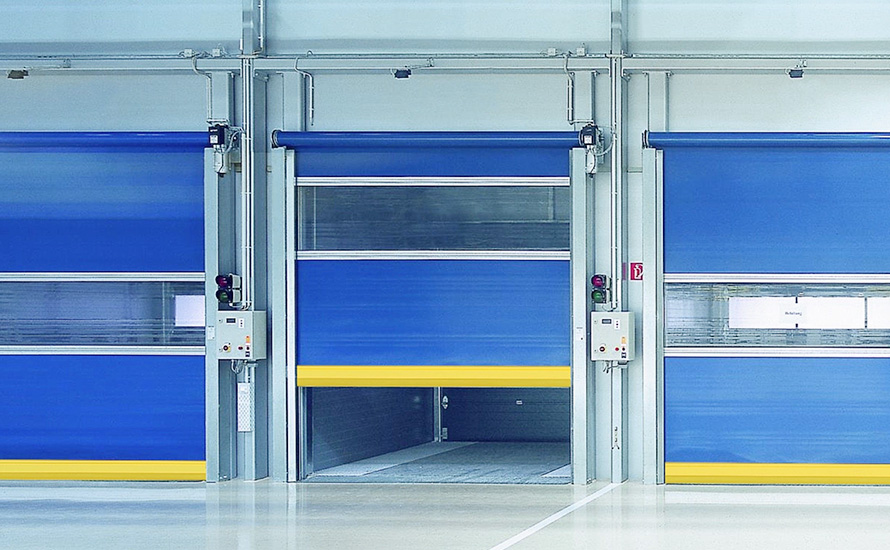
How do the cost savings from space optimization compare to the investment costs of Hexion doors?
The cost savings from space optimization achieved through high-speed roll-up doors can significantly offset the initial investment costs. By maximizing floor space utilization and improving workflow efficiency, businesses can reduce the need for larger facilities, additional storage space, or costly renovations. Over time, the cost savings from space optimization can outweigh the investment costs of high-speed roll-up doors, making them a financially viable solution for long-term space management and operational efficiency.
Explore Hexion Doors' product portfolio via the link below. Benefit from complimentary design plans and customized quotations. Contact us for expert consultation.




